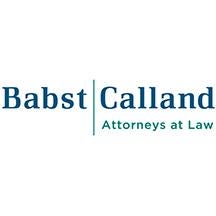On September 5, 2025, the United States Court of Appeals for the District of Columbia Circuit (D.C. Circuit) reinstated an affirmative defense under the Clean Air Act (CAA) for exceedances occurring as a result of an emergency, ruling that the Environmental Protection Agency’s (EPA) rescission of that defense was arbitrary and capricious. EPA had first established that affirmative defense for state-issued Title V permits in 1992, 57 Fed. Reg. 32250, 32306, and then expanded it to federally-issued Title V permits in 1996, 61 Fed. Reg. 34202, 34239. In doing so, it created a limited shield to liability for exceedances of emissions limitations if the operator could prove that the exceedance was due to “any situation arising from sudden and reasonably unforeseeable events beyond the control of the source, including acts of God ….” 40 C.F.R. § 70.6(g)(2). By 2016, however, EPA had concluded that the affirmative defense unlawfully encroached on the judiciary’s role to impose appropriate civil penalties for CAA violations or, alternatively, rendered applicable emissions limitations “non-continuous” in violation of 42 U.S.C. § 7602(k). EPA then rescinded the regulation affording the affirmative defense in 2023. 88 Fed. Reg. 47029, 47030–31
SSM Litigation Group (SSM), a coalition of interest groups representing Title V permit holders, petitioned the D.C. Circuit for review. After first disposing of EPA’s challenge to SSM’s standing, the Court turned to whether EPA’s elimination of the affirmative defense was arbitrary, capricious, an abuse of discretion, or otherwise not in accordance with law.
EPA’s merits-based argument was two-pronged. The CAA allows any person to commence a civil action against another person or entity who is alleged to have violated an emission standard or limitation. 42 U.S.C. § 7604. Once such a suit has been brought, district courts have the authority to determine an appropriate civil penalty. Id. EPA maintained that the affirmative defense limits a district court’s authority to impose such civil penalties by allowing operators to escape liability. The Court, relying upon its own recent precedent, disagreed. Citing Florida Electric Power Coordinating Group, Inc. v. EPA, 94 F.4th 77 (D.C. Cir. 2024), the Court reiterated the distinction between a complete defense and a defense limited solely to remedies. Affirmative defenses that apply only to remedies exceed EPA’s authority, as they impermissibly constrain the discretion of district courts to impose civil penalties once enforcement proceedings have commenced. Conversely, establishing complete defenses does not run afoul of EPA’s authority because complete defenses relate to liability and not penalties. In other words, the district court’s authority to impose civil penalties is not hindered where the affirmative defense precludes any finding of liability.
EPA also maintained, though, that the affirmative defense violated the CAA’s continuity principle by authorizing deviations from applicable emissions limitations. See 42 U.S.C. § 7602(k). The Court found this logic to be flawed because affirmative defenses do not halt the applicable standards. Instead, the Title V defense simply prevents operators from incurring liability for non-compliance during emergencies. The underlying emissions standard continues to apply, and is therefore “continuous,” but the operator is not liable despite their failure to abide with the ongoing standards. To further clarify the breadth of this ruling, the Court stated that “a complete affirmative defense to liability does not render an emission limitation non-continuous.”
In sum, EPA’s rescission of the Title V defense was based on a legal interpretation of the CAA that the D.C. Circuit has since rejected, rendering the agency’s action arbitrary and capricious. As a result, the Title V affirmative defense for emergencies remains a liability shield for operators.
Ryan McCann contributed to this article





 />i
/>i

